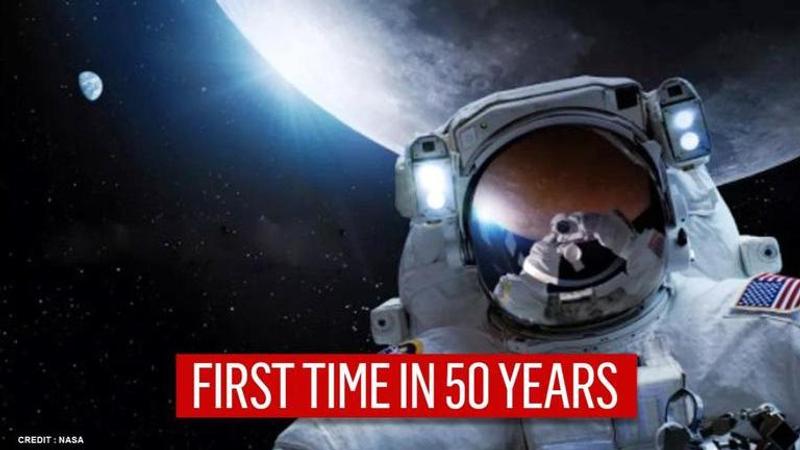Published 05:42 IST, December 10th 2020
NASA forms 'Science Definition' team for Artemis III lunar mission in 2024
NASA will have its Science Definition Team conduct research about volcanism, volatiles, impact processes, tectonics, and other details about lunar environment.

In its 'Science Definition' Artemis 3 report, NASA revealed that it will train its astronauts to perform complicated scientific tasks for the first crewed lunar surface mission planned in 2024. The mission will usher the human exploration and development in deep space learning that will answer fundamental planetary science questions, according to NASA.
After 50 years since humans first landed on the moon, in its modern era lunar touchdown, NASA will have its Science Definition Team conduct extensive research about volcanism, volatiles, impact processes, tectonics, and other details about the lunar environment. Astronauts will also conduct new advances arising from robotic lunar missions, will reanalyse older data, and perform sample analysis of the lunar surface.
"The optimal sample-return program is built upon geologic-context observations made by well-trained astronauts, aided by modern tools and real-time communication with scientists on Earth," NASA officials said in the report.
Science Definition Team’s Objectives, Goals, and Investigations identified by the Science Mission Directorate in the Artemis Science Plan include:
- Understanding planetary processes
- Understanding the character and origin of lunar polar volatiles
- Interpreting the impact history of the Earth-Moon system
- Revealing the record of the ancient sun and our astronomical environment
- Observing the universe and the local space environment from a unique location
- Conducting experimental science in the lunar environment
- Investigating and mitigating exploration risks
The investigations on the lunar surface will be prioritised in a way that felicitates a more robust scientific understanding of the moon which will help advance the follow-up lunar missions and will help develop the Artemis Base Camp. "A more detailed mission operations plan will need to be developed by NASA when HLS system capabilities, a landing site, and other architectural details come into sharper focus," the space agency informed in the report.
Crew to stay for 6 and a half days
Under the Artemis program, NASA astronauts will stay on the moon for up to 6 and a half days and the crew for the Artemis 3 mission will be selected in 2022 or 2023, the space agency informed in a press briefing. Human astronauts can perform complicated tasks on the moon easily such as drilling cores and digging trenches, compared to robots, Sarah Noble, lunar program scientist in NASA's science mission directorate reportedly said.
The humans achieving the scientific goals will be an advancement of their capabilities compared with robot artificial intelligence and artificial imaging. NASA plans to impart geology expeditions and training similar to that given to Apollo astronauts in the 1970s.
(Images Credit: NASA)
Updated 05:42 IST, December 10th 2020




